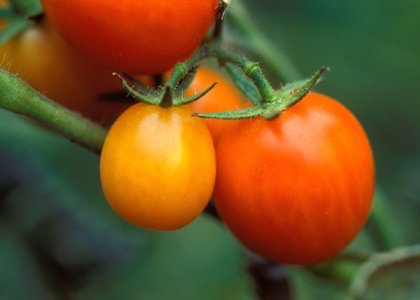
A Kitchen Garden – Getting Started, part 1
By Pamela Page
Growing your own food is easy. All you really need are warm days, sunlight, water, and a willingness to see things from the plants point of view.
Here are a few things to know before you grow:
1) Choose your kitchen garden site carefully. Fruits and vegetables require a minimum of 6 hours of direct sunlight a day.
2) Choose varieties that don’t exceed the growing days in your area. Certain fruits and vegetables require more growing days than others to yield. Different regions have different numbers of growing days. While I’d love to, I don’t have bananas, papayas or coconuts in my Connecticut kitchen garden. Or even celery or artichokes. Our growing season is very short. And the snow wreaks havoc on the tropical trees.
3) Know your last and first “Frost Dates.” Setting out tender vegetables, such as eggplant, tomatoes and peppers, before the last frost just means heartache. Beans, cucumber and melon seeds will rot in cold, wet beds. For everybody in the U.S., The Farmer’s Almanac has a great site for determining your last frost.
4) Transplants vs. seeds. If you’re short on time or space, you can purchase baby plants, or transplants, through the mail or from a local nursery. If you’re in the mood for unusual vegetables such as purple kale, yellow cucumbers or candy-striped striped beets, you’ll need to start your vegetables from seeds. Eggplant, peppers and tomatoes should be started indoors eight to ten weeks before the last frost, and then set out a few weeks after that date.
Others vegetables such as cucumbers, kale, lettuce or squash take a lot less time to produce and can be started from seeds planted directly into the ground once the soil reaches approximately 55 degrees.
5) Water properly… not too little or too much. If you start seeds indoors, adopt a watering schedule and stick to it. In the early days, after my seeds sprouted – or germinated (the proper term), – I’d forget to water. And more than once, I came home to find a desert where an oasis had been. Like us, plants are mostly water – water in green skins – so when the water goes, they do, too – especially if they’re in the neo-natal phase.
Once in the ground, vegetables need approximately an inch of rain a week. If you water with a hose, water long enough to soak the soil to at least six inches. It’s best to water in the morning. Do not water during the heat of the day. Tomatoes like their feet wet, but their clothes dry. Don’t spray their leaves.
Don’t overwater. Plants breathe through their roots, and if their roots are trapped in waterlogged soil for too long, plants drown. The trick is to let the soil dry and oxygen enter before watering again.
Got it? Great! But there’s a little more to know.
Stay tuned for: A Kitchen Garden – Getting Started, Part 2